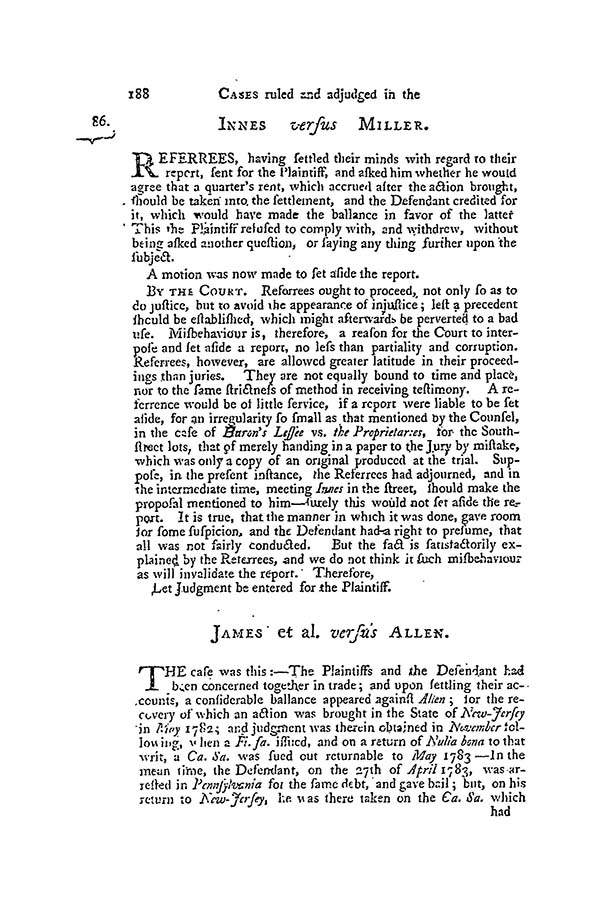Innes v. Miller, 1 Dall. 188 (C. P. Phila. Cty. 1786)
Common Pleas, Philadelphia County:
September Term, 1786
Innes versus Miller.
Referrees, having settled their minds with regard to their report, sent for the Plaintiff, and asked him whether he would agree that a quarter's rent, which accrued after the action brought, should be taken into the settlement, and the Defendant credited for it, which would have made the ballance in favor of the latter. This the Plaintiff refused to comply with, and withdrew, without being asked another question, or saying any thing further upon the subject.
A motion was now made to set aside the report.
By the Court. Referrees ought to proceed, not only so as to do justice, but to avoid the appearance of injustice; lest a precedent should be established, which might afterwards be perverted to a bad use. Misbehaviour is, therefore, a reason for the Court to interpose and set aside a report, no less than partiality and corruption. Referrees, however, are allowed greater latitude in their proceedings than juries. They are not equally bound to time and place, nor to the same strictness of method in receiving testimony. A referrence would be of little service, if a report were liable to be set aside, for an irregularity so small as that mentioned by the Counsel, in the case of Baron's Lessee vs. the Proprietaries, for the South-street lots, that of merely handing in a paper to the Jury by mistake, which was only a copy of an original produced at the trial. Suppose, in the present instance, the Referrees had adjourned, and in the intermediate time, meeting Innes in the street, should make the proposal mentioned to him—surely this would not set aside the report. It is true, that the manner in which it was done, gave room for some suspicion, and the Defendant had a right to presume, that all was not fairly conducted. But the fact is satisfactorily explained by the Referrees, and we do not think it such misbehaviour as will invalidate the report. Therefore,
Let Judgment be entered for the Plaintiff.
Citation: Innes v. Miller, 1 Dall. 188, 1 U.S. 188 (C. P. Phila. Cty. 1786).

Last modified: July 31, 2014